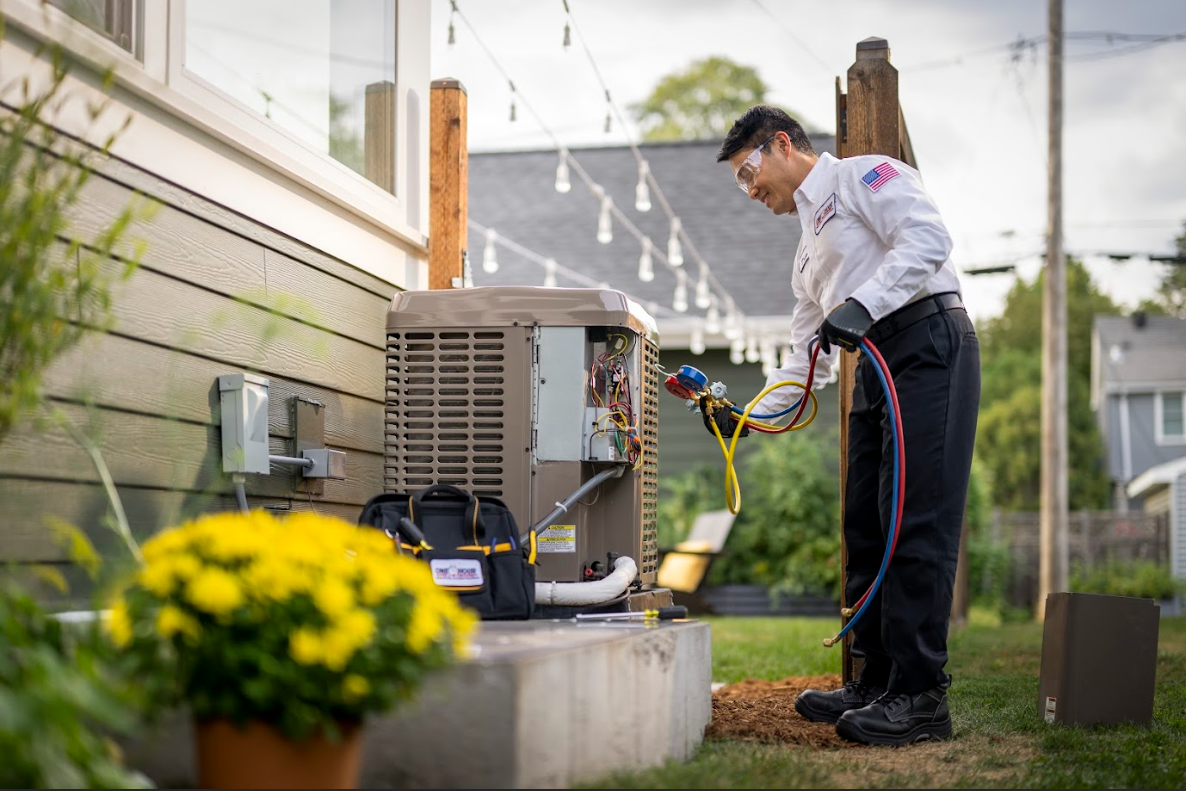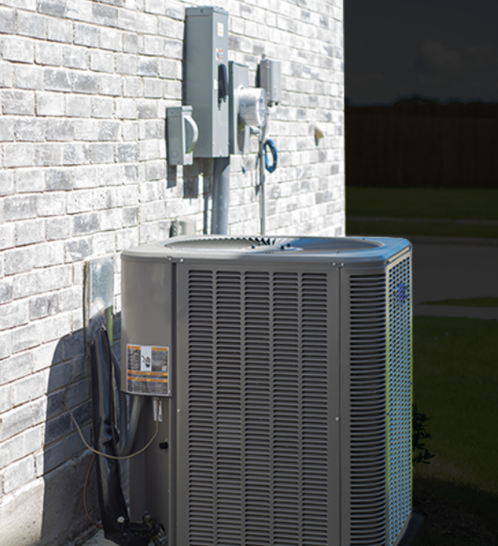
What to check before calling an HVAC technician
Homeowners in Ogden know how fast weather swings from a chilly Ben Lomond morning to a hot afternoon on Washington Boulevard. When heating or cooling drops off, it is tempting to call an expert right away. A quick check can save a service fee and get comfort back sooner. The list below comes from common calls One Hour Heating & Air Conditioning sees across HVAC Ogden service visits, along with quick fixes any homeowner can do safely.
Start with power and settings
Many “no heat” or “no cool” calls trace back to simple settings. Confirm the thermostat is on, set to Heat or Cool, and the temperature is set at least three degrees past current room temperature. If the screen is blank or dim, replace the batteries. Some smart stats on 24V power still need batteries to hold the display. On heat pump systems, make sure Emergency Heat is not selected unless there is a known outdoor unit issue.
Next, check the furnace or air handler switch. Most basements and garages in Ogden have a standard light switch on or near the unit. That switch controls power to the system and gets shut off during cleaning or by accident. Flip it on and wait a minute for some models to boot.
Look at the breaker panel. A tripped breaker shows halfway between on and off. Push it fully off, then fully on. Heat pumps often use two breakers: one for the air handler and one for the outdoor condenser. Gas furnaces typically share a circuit with the blower. If the breaker trips again right away, stop and schedule service. Repeat trips point to a shorted motor, heat strip, or compressor.
Airflow problems that mimic breakdowns
Poor airflow can look like a failed compressor or cracked heat exchanger when it is only a clogged filter. Pull the filter and read the size. If you cannot see light through it, replace it. In Ogden’s dry summers, homes near construction on Harrison or 12th Street load filters fast. During wildfire smoke days, a pleated 1-inch filter can clog in two to four weeks. After replacing, set a reminder. A simple marker note on the return grille with the change date helps.
Confirm that supply vents are open and clear. A few closed registers can raise static pressure and cause coil freeze-ups. Check the big return grille too. A sofa pushed close to it starves the system. If you see frost on the indoor coil panel or on refrigerant lines, turn the system off and set the fan to On for 2 to 4 hours to thaw. Running cooling while frozen will not help and can damage the compressor.
Outdoor unit quick checks
Walk outside to the condenser or heat pump. It should be running during a cooling call, with a steady fan and a light hum from the compressor. If the indoor fan runs but the outdoor unit is silent, look for a service disconnect near the unit. The pull-out may be upside down. Remove it and reinsert with the On side facing out. Also check for a tripped GFCI outlet if your condenser uses a condensate pump nearby.
Clear debris. Cottonwood fluff in late spring, fall leaves, and grass clippings choke airflow through the coil. Turn power off at the disconnect. Hose the coil from inside out if you can access it, or from the outside at a low angle. Avoid high-pressure sprayers. A 10-minute rinse can drop head pressure enough to restore cooling on a hot Ogden afternoon.
If the fan spins slowly or wobbles, or the top of the unit is hot to the touch while the fan is off, shut it down and call. That pattern often points to a failed capacitor or motor. Those parts are simple for a technician but unsafe for DIY because they store charge.
Furnace checks on cold Weber County nights
For gas furnaces, confirm the gas valve on the supply line is parallel with the pipe. If perpendicular, it is off. Many homeowners turn it off during summer work and forget. Look through the sight glass while the thermostat calls for heat. You should see the igniter glow, then burners light in order. If the igniter glows but burners do not light, the issue could be the flame sensor or gas supply. If nothing happens, the door switch may be open; make sure the blower compartment door is fully latched.
If the furnace starts then shuts off within a minute, think airflow or safety switches. Replace the filter, open more registers, and check that the condensate drain is not backed up on high-efficiency models. A full drain trap trips the pressure switch. If you find water around the furnace, turn the system off and schedule service—water near electronics can spiral into bigger repairs.

Thermostat sanity checks
Minor thermostat settings cause major headaches. For heat pumps, disable any “compressor lockout” or “heat pump balance” modes when testing. Make sure the thermostat’s system type matches your equipment. If a stat is set to conventional heat, but the home has a heat pump with auxiliary heat, staging will be wrong and comfort will suffer.
If you just replaced https://www.onehourheatandair.com/ogden a thermostat and the outdoor unit does not run, the O/B reversing valve wire may be misassigned. Homeowners in Ogden who replace stats during a remodel often miss this. If unsure, take a clear photo of the old wiring before changing anything. When in doubt, stop and call. Crossed low-voltage wires can blow the fuse on the control board.
Condensate drains and safety switches
Air conditioners and 90-plus furnaces create water. That water drains to a floor drain or pump. If the drain clogs, a float switch shuts the system down to prevent leaks. Check the drain pan under the coil for standing water. If full, clear the line by removing the cap and flushing with warm water. A half cup of white vinegar monthly keeps algae down. If you hear a small pump clicking but not moving water, it may be stuck. Power the system off and clean the pump, or request service if the pump overheats.
Odors, noises, and what they usually mean
A burning dust smell on the first heat cycle each fall is normal and clears within an hour. A sharp electrical odor or visible smoke is not normal—turn power off and call.
High-pitched squeals suggest a failing blower motor or belt on older units. Grinding or scraping is more serious. Outdoor rattles often come from loose fan guards after a windstorm in Ogden Canyon. Tightening hardware can solve it, but bending fan blades will not. If you hear a loud buzz and the outdoor fan is not spinning, a capacitor is the likely cause; do not poke the fan with a stick, as that can mask a failing part and risk injury.
What to check before you call: a quick local checklist
- Thermostat on, correct mode selected, batteries fresh, temperature set past room temp
- Furnace/air handler switch on and breakers reset once; no repeated trips
- Clean filter installed; vents and returns open and unobstructed
- Outdoor unit clear of debris; disconnect inserted correctly; coil gently rinsed
- Condensate drain clear; no standing water in pan; float switch reset after clearing
If these items check out and the system still struggles, it is time to schedule a visit. Provide the model number, age estimate, and describe symptoms: no heat, short cycling, ice on lines, or breaker trips. That helps the technician bring the right parts.

Seasonal considerations for HVAC Ogden homes
Ogden’s dry cold and dusty summers shape common failures. Static pressure rises quickly with clogged 1-inch filters in older duct systems from East Bench bungalows to West Ogden ramblers. Consider upgrading to a media cabinet with a 4-inch filter during your next service; it reduces restriction and extends filter life to 6 to 12 months.
On heat pumps, winter frost is normal, but thick ice encasing the outdoor unit is not. If you see that in North Ogden after a storm, switch to Emergency Heat and schedule service. The defrost board or sensor may be out. During late spring cottonwood season along the Ogden River Parkway, plan a coil rinse every few weeks. A clean outdoor coil can cut runtime by several minutes per cycle.
Small fixes that pay off
Tighten low-voltage wire nuts at the outdoor unit if they are visibly loose. Sun and snow can loosen them over time. Replace UV-cracked insulation on the suction line with new foam to protect efficiency. Add a simple pan tablet each cooling season to keep drains clear. These are inexpensive, safe tasks that prevent bigger issues.
For comfort complaints in two-story homes near Crestwood or Shadow Valley, try setting the fan to On during the hottest afternoons or coldest mornings to even temperatures between floors. Closing more than one or two supply registers to “push air upstairs” often backfires. Better solutions include balancing dampers, duct sealing, or zoning. Those are worth discussing during a professional visit.
When DIY stops and safety starts
Smell gas, hear repeated breaker trips, see scorch marks, or find water around electrical components—shut the system down. Do not open gas valves or access panels beyond the filter door. Refrigerant work, combustion adjustments, and high-voltage diagnostics require tools and training. A quick call prevents extended downtime and protects equipment under warranty.
Ready for pro help in Ogden
If the basic checks did not resolve the issue, One Hour Heating & Air Conditioning can help. The team handles furnace repair, AC repair, heat pumps, mini-splits, maintenance, and replacements across HVAC Ogden neighborhoods, from Midtown and Five Points to South Ogden and West Haven. Same-day slots are often available during peak heat or cold. Call or book online for a punctual visit. Share what you checked from the list above, and the technician will pick up right there to get your home comfortable again.
One Hour Heating & Air Conditioning provides trusted furnace repair in Ogden, UT and full-service HVAC solutions for homes and businesses. Family-owned and operated by Matt and Sarah McFarland, our company is built on honesty, hard work, and quality service—values passed down from Matt’s experience on McFarland Family Farms, known across Utah for its sweet corn. As part of a national network founded in 2002, we bring reliable heating and cooling care backed by professional training and local dedication.
Our licensed technicians handle furnace and AC installation, repair, and maintenance, heat pumps, ductless mini-splits, thermostat upgrades, air purification, indoor air quality testing, humidifiers, dehumidifiers, duct cleaning, zoning systems, and energy-efficient replacements. We stand by a 100% satisfaction guarantee through the UWIN® program and provide honest recommendations to help Ogden homeowners stay comfortable year-round.
Call today for dependable service that combines national standards with a personal, local touch.
One Hour Heating & Air Conditioning
1501 W 2650 S #103 Phone: (801) 405-9435 Website: https://www.onehourheatandair.com/ogden
Ogden,
UT
84401,
USA